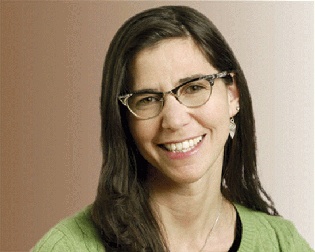


Latest news, alerts, and events.
Latest news, alerts, and events.
 Many things distinguish us as individual nonprofits – the type of service we provide, our location, the length of time we have been in business, the number of staff we have, the size of our boards. Still, as nonprofits there are at least six characteristics that let us know we are one. What I appreciate about the six is that they are framed in the positive. Often our sector is framed by what we are not, i.e. NOT-for-profit, or in the case of international organizations known as NGOs, NOT a government entity. As a result, some scholars have tried to retitle our sector in a more positive light – the social sector, the independent sector, or as Adam Braun said in a recent talk in Anchorage, “the purpose sector.” These titles are helpful but they are not the common language of people who work in the sector, let alone the public.
Many things distinguish us as individual nonprofits – the type of service we provide, our location, the length of time we have been in business, the number of staff we have, the size of our boards. Still, as nonprofits there are at least six characteristics that let us know we are one. What I appreciate about the six is that they are framed in the positive. Often our sector is framed by what we are not, i.e. NOT-for-profit, or in the case of international organizations known as NGOs, NOT a government entity. As a result, some scholars have tried to retitle our sector in a more positive light – the social sector, the independent sector, or as Adam Braun said in a recent talk in Anchorage, “the purpose sector.” These titles are helpful but they are not the common language of people who work in the sector, let alone the public.
So what are the traits we all share? Lester Salamon, author of the signature book on the sector, America’s Nonprofit Sector: A Primer, outlines those six similar characteristics:
So why, after Foraker has been in business for 15 years, am I reminding us of what we wrote about in the beginning of our work? Because, as our state experiences economic uncertainty, our solutions need to be about what binds us together, not what separates us. We will have many opportunities to work together to be part of the solution in our state, but as the funding gets tighter, there will be great temptation to let ourselves become divided, competing and comparing our standing to one another, to be our own enemy instead of an ally. I have no doubt that our sector in Alaska will feel the weight of the shifting economy – in fact, that’s already happened as several of you noted in a recent article in the Alaska Dispatch News.
As this trend inevitably continues, we want you to know that Foraker is ready to stand beside you. We are ready to convene groups, serve as a catalyst, and help create solutions. We also want you to know that we need to hear from you. In order to address trends we need your voice. You have several options right now. You can choose to be silent, standing by to see what happens. You can complain and shout about unfairness. Or you can be part of a team working on solutions to very complex challenges and so much more. We are choosing the latter.
Our most recent commitment to strengthening Alaska’s nonprofit voice is to convene a minimum of four sessions on the current economic model that was unveiled by Governor Walker in early June in Fairbanks. Our goal is to position the nonprofit sector as part of the overall solution to our economic challenges. We generate 12% of the workforce across the state and over 50% in many rural communities. We have an opportunity to raise the level of awareness of nonprofit leaders about the choices we all face and work together to find solutions. We are in the process of developing the agenda, setting dates, and picking locations. We also will hold one online session for maximum participation. We’ll be in touch as these plans take shape – and hope you will take part in one of the sessions.
We are also highlighting the newly updated website which encourages all of us to “stand for your mission.” This website and its resources are a collaborative effort of many partners including the National Council of Nonprofits, which represents state nonprofit associations including Foraker. I strongly encourage you to spend some time exploring this site, which is designed to help your board and staff understand their role and responsibilities in nonprofit public policy and advocacy. We all have a voice. I look forward to hearing yours.